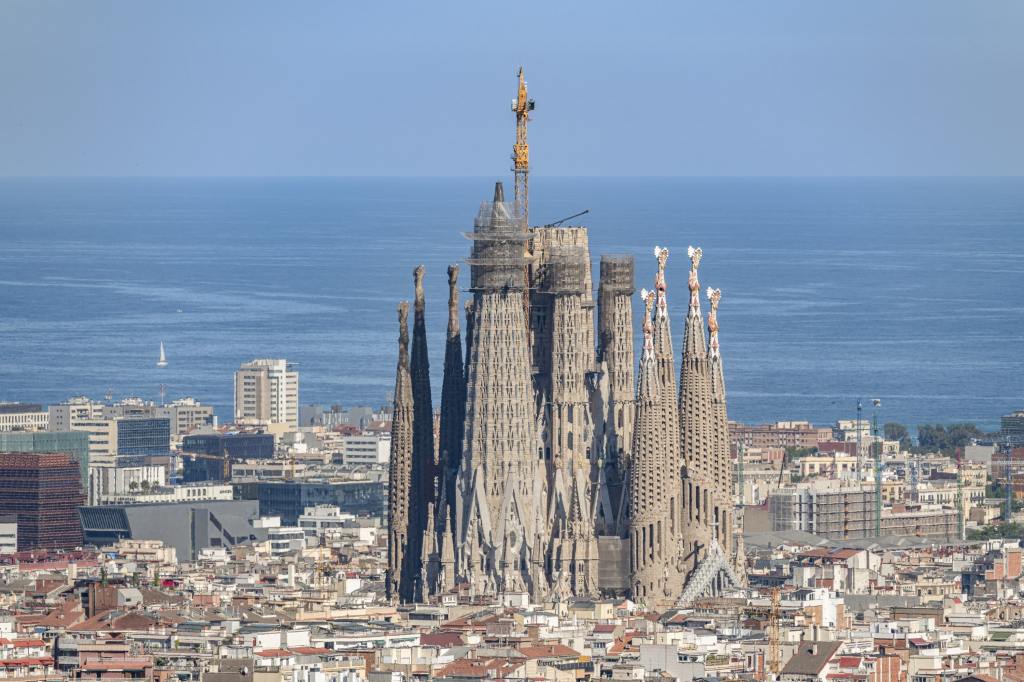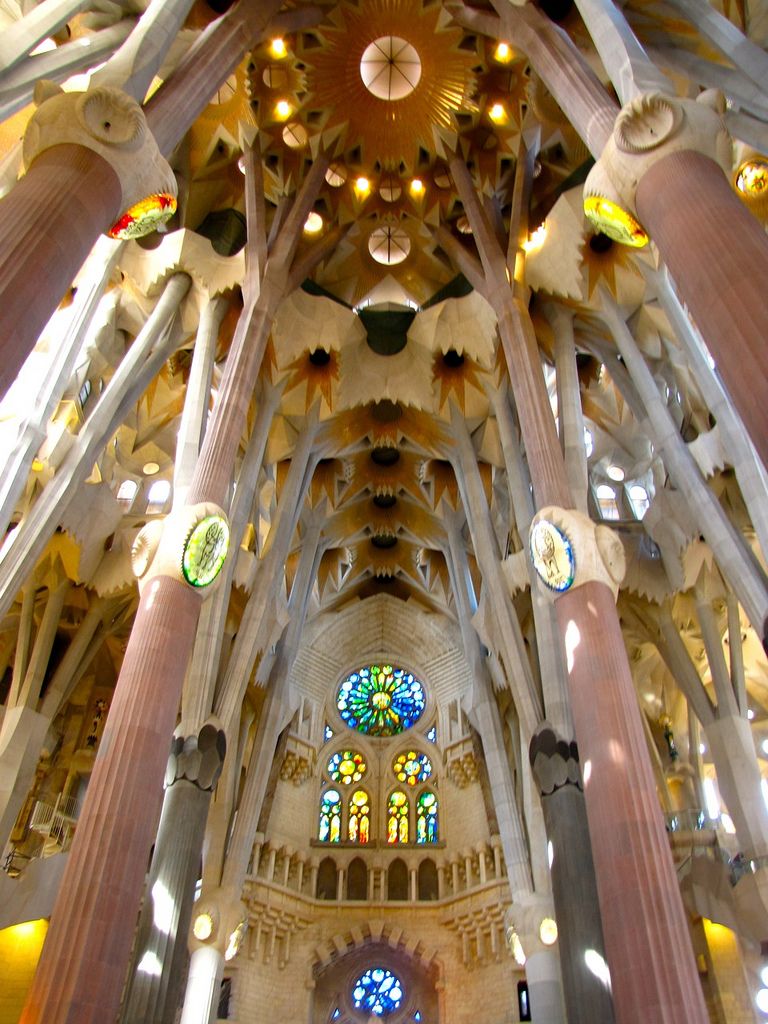 This is the second part of couple of blogs based on a teaching day at Sarum College, Salisbury this year. The day explored the exile story as a means of engaging with the missional challenge for the church in post-Christendom Britain. It focussed specifically on the vision of Ezekiel in the valley of dry bones.
This is the second part of couple of blogs based on a teaching day at Sarum College, Salisbury this year. The day explored the exile story as a means of engaging with the missional challenge for the church in post-Christendom Britain. It focussed specifically on the vision of Ezekiel in the valley of dry bones.
Then he said to me, “Prophesy to these bones and say to them, ‘Dry bones, hear the word of the Lord! 5 This is what the Sovereign Lord says to these bones: I will make breath[a] enter you, and you will come to life. 6 I will attach tendons to you and make flesh come upon you and cover you with skin; I will put breath in you, and you will come to life. Then you will know that I am the Lord.’”
7 So I prophesied as I was commanded. And as I was prophesying, there was a noise, a rattling sound, and the bones came together, bone to bone. 8 I looked, and tendons and flesh appeared on them and skin covered them, but there was no breath in them.
9 Then he said to me, “Prophesy to the breath; prophesy, son of man, and say to it, ‘This is what the Sovereign Lord says: Come, breath, from the four winds and breathe into these slain, that they may live.’” 10 So I prophesied as he commanded me, and breath entered them; they came to life and stood up on their feet—a vast army.
11 Then he said to me: “Son of man, these bones are the people of Israel. They say, ‘Our bones are dried up and our hope is gone; we are cut off.’ 12 Therefore prophesy and say to them: ‘This is what the Sovereign Lord says: My people, I am going to open your graves and bring you up from them; I will bring you back to the land of Israel. 13 Then you, my people, will know that I am the Lord, when I open your graves and bring you up from them. 14 I will put my Spirit in you and you will live, and I will settle you in your own land. Then you will know that I the Lord have spoken, and I have done it, declares the Lord.’” (Eze 37: 4 – 14)
Having defined the reality of Israel’s predicament and let go of any attachments toward unrealistic salvation by the old methods, Ezekiel is given a vision of hope. The cry of the exile is to go home, it is for restoration of what seems so precious now, but which was normal before the crisis; security, identity, peace. Ezekiel’s vision however suggests not restoration but renewal – a recreation of what it means to come home.
What becomes clear I that a new thing is taking place. The hope for Israel is not restoration, a return to the former things – God has something more creative in mind. Recreation. Resurrection. The giving of the Spirit echoes the creation story of Gen 2:7, humankind is created from the dust of the ground and life breathed into them. It also foreshadows the breathing into the disciples of the Sprit after the resurrection in John 20.
In this vision the primacy of God’s initiative provides the context in which Ezekiel is invited to participate. God creates the space in the narrative for Ezekiel to participate, but the initiative is always his. The repeated declarations of ‘I will’ from the voice of God are a constant reiteration of God’s agency and initiative.
Fundamental to the vision is the Spirit. The use of the word ruach binds the passage together. Used creatively and with variety – translated wind, Spirit, breath, and applied to humanity, nature, God. The Spirit is the animator of resurrection. Indispensable to it. But the Spirit cannot be boxed or treated like a utility. There is a mysterious, multivalent, unpredictable nature to the Spirit. He is central and powerful yet decentred character in the narrative.
Renewal as a way home
 This resurrection and renewal then is explained as a homecoming. ‘’I will bring you back to the land of Israel’ (vs 12) ‘I will settle you in your own land’ (vs 14). This looks again like restoration – a return to former things, yet for two reasons we know that restoration is not what is in mind. Firstly, whilst there was a homecoming, the impact of exile was far reaching and creative. Israel did not see itself as having been restored even with the rebuilding of the temple and of Jerusalem. Hence the disciples can ask ‘Lord, are you at this time going to restore the kingdom of Israel’ (Acts 1: 6)
This resurrection and renewal then is explained as a homecoming. ‘’I will bring you back to the land of Israel’ (vs 12) ‘I will settle you in your own land’ (vs 14). This looks again like restoration – a return to former things, yet for two reasons we know that restoration is not what is in mind. Firstly, whilst there was a homecoming, the impact of exile was far reaching and creative. Israel did not see itself as having been restored even with the rebuilding of the temple and of Jerusalem. Hence the disciples can ask ‘Lord, are you at this time going to restore the kingdom of Israel’ (Acts 1: 6)
Secondly, all the foreshadowing of re-creation in this passage points to the emergence of something new, not a return to the old. Rather this is homecoming as renewal, a return to the sense and structure of home but in a new way. It is perhaps homecoming in the sense that TS Eliot put it, that ‘at the end of all our exploring will be to arrive where we started and know the place for the first time.’
Of course, there was a homecoming, under Cyrus of Persia (see Ezra, Nehemiah, Haggai) but it is by no means a return to business as usual. Instead the post-exilic period saw a thorough and radical reimagining of what it meant to be the people of God. As Brueggemann puts it : ‘exile did not lead Jews in the Old Testament to abandon faith or to settle for abdicating despair, nor to retreat to privatistic religion. On the contrary, exile evoked the most brilliant literature and the most daring theological articulation in the Old Testament’ (Cadences of Home, p3)
This reimaging can be described under 3 headings, and these provide 3 focusses for reflection in terms of our response to the place of the church in post-Christendom Britain.
Firstly a radical development in the understanding of God’s presence – from specific to universal. Exilic literature asserts the presence of God in hitherto unimaginable places, foreign soil. God was still with them in exile, he had not disappeared, his presence was not bound by their assumptions of him. Hence radical witness of the vision of Ezekiel – the overwhelming glory of the presence of God appeared to Ezekiel from the very beginning ‘while I was among the exiles by the Kebar river’ (1:1).
This relates powerfully to one of the great emerging emphases of the fresh expressions movement. The great rediscovery by the likes of David Bosch, hugely influential to early pioneers and to the Mission Shaped Ministry report, was the concept of mission Dei. That God is a missionary God in his very nature, and that his key agency for mission is his people.
This fundamentally changes how we think about and carry out mission. The key task as leaders of mission is one of listening and discernment. It is seeking to listen and discern a sense of what God is already doing in the community we are engaging with and coming alongside. Eze 37 bears out this pattern, God’s initiative in transformation and renewal is clearly articulated, the role of Ezekiel is to listen, and participate in humble obedience.
I call this contemplative mission – it is mission that starts first and foremost with an attitude of contemplation, of making space for God and the centre of life and ministry. It is a trained and discipline attentiveness to the context in which are called.
The anxiety of crisis, in Ezekiel and in the challenge facing the church, lends itself to quick fixes, to models and plans, anything to get us out of this crisis. But what we need is vision, imaginative and Spirit-inspired vision. Vision that will enable us to go somewhere neither we nor the people we are seeking to reach have been before.
Secondly a developed understanding and practice of holiness – from ritualistic to holistic. The exilic narratives emphasise faithful Jewish practice in the face of the challenges of a dominant culture. The holiness codes of Lev 17 – 26 generally thought to have been definitively shaped around the 6th century BC. This code is detailed and thorough and is testimony to a developed expression of holiness that moved beyond episodic ritual to holistic practice. Other exilic prophets begin to express circumcision as a metaphor for distinctive faith, ‘circumcise your hearts’ (Jer 4:4), whilst Sabbath keeping and tabernacle constitute recovery of the sacramental life of Israel.
We can similarly trace the expression of this response in the key emphasis in the pioneer/Fresh Expression movement of authentic community. For many the monastic pioneers of the Celts, Benedictines and Franciscans have been a source of inspiration. Whereas Christendom seemed fixated with orthodoxy and became endlessly bogged down in doctrinal disputes, the missionary imperative of post-Christendom argues for communities of Christian disciples committed to the pursuit of Christ-centred orthopraxy.
Discipleship is therefore of fundamental importance to these new forms of church, much more so than observance. The call is clearly to live lives of authentic witness in the midst of the dominant culture in which we are exiles. Authentic witness will be faithful to the gospels and countercultural to the prevailing values of the dominant culture.
Finally exile saw a reformation in Israel’s understanding of its mission, from attractional to incarnational. Exile brought about a renewed sense for Israel of being a people with a mission to bless the nations. Passages in 2nd Isaiah’s servant songs articulate a call on the Israel to once again act as a light to the nations. Jeremiah writing to the exiles calls on them to ‘see the peace and prosperity of the city to which I have carried you into exile’ (Jer 29:7). The didactic narratives also have a clear missional emphasis: Jonah preaching to the Ninevites who respond in repentance and faith, Daniel’s demonstration of the supremacy of Yahweh resulting in declarations of faith from Nebuchadnezzar.
There is a huge re-emphasis on the theme of mission, but this emphasis is clearly incarnational. It builds on the understanding that God is present on foreign soil and amongst foreign people. Whereas any sense of being a blessing to the nations seemed confined the welcome of stranger and aliens, now there is an added dimension of being a holy and distinctive presence amongst a foreign people.
Once again this reflects similar renewed emphasis in the mission of our time with the proliferation of incarnational forms of mission and church planting. In the long twilight of Christendom attractional methods of encouraging people to church may still have some traction. But exile suggests the issues are more fundamental than simply the distance between the church and the pub – the distances in cultural terms that we need to travel may be as great as Jonah’s journey to Ninevah, the exiles journey to Babylon, Paul’s journey to Athens. Mission cannot be an occasional, even regular, mission week or Alpha course, mission must become the orienting factor which shapes the very nature of church. It must be as much about who we are as Christian community as what we do. It was emanate from our radical presence amidst the people of the culture in which we live.








